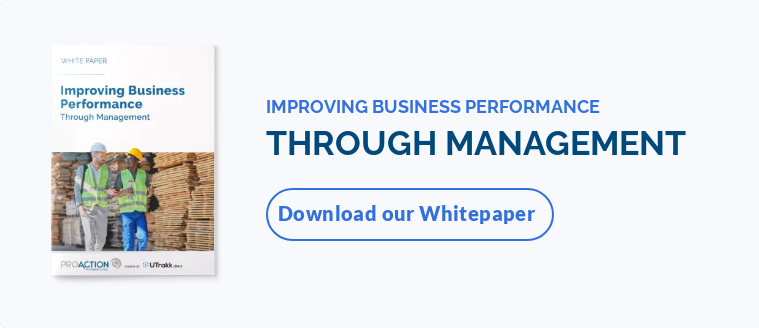1. Establishing the coaching relationship
All relationships are based on commitment and trust. Manager-employee and coach-coachee relationships are no exception, and coaching success depends on it. Once we have established this understanding, we can then proceed to implement the changes the coach and client so desire. Trust is developed over time, but we can accelerate the process by finding common ground on the nature of the relationship.
Here is a series of very simple questions we can ask to define the coaching relationship:
- What is the point of us working together?
- Why am I here, and why is that person there as well?
- What are we going to try to achieve together?
For building trust in a coaching relationship, we also need to develop an understanding of the coach by the coachee. With practice, I have found in my coaching experience that I need to show everything that I am about: my professional knowledge, my goals, and my expectations. Putting my cards on the table allows me to build trust with my coaching clients, and avoids misunderstanding or conflict situations.
I love sharing my personal and professional background and experiences as I find it opens the door for my coachee to do the same and to communicate openly. It is also a good bonding opportunity between a manager and an employee.
With a well-established and healthy relationship, we can move forward together to foster the change we want to see.
2. Setting goals during a coaching session
Two factors are at play when establishing objectives in a coaching relationship:
- What the organization wants to achieve.
- What the coachee wants to accomplish.
Let's take an example from my coaching sessions with managers. The organization may mandate a coach (me) to complete a project which main objective is to increase revenue. However, the coachee may also have a concern about employee retention.
Now, these two objectives go hand in hand. But the coachee might not always see it at first. They might say: “You know what? Making money isn’t my priority. I care about keeping good employees.” The coach’s job is to elevate their vision while remaining very practical and down to earth.
Once the relationship is established, the coach knows what the coachee’s priorities are. They must help them see that, but also the bigger picture. The bigger picture usually is what the CEO wants to see, the organization’s objectives. The coached manager might say something like: “My CEO doesn't understand that you have to keep good people.” As a coach, the answer should be: “I get it, I understand. So, let's work on that as well. How do we increase revenue while keeping good people?”
The subjects may change, but the same thing happens in coaching relationships between managers and employees, whether they are also managers or not.
When the goals are put together (and sometimes there may be 5, 6, 7, 8 of them) the coach can make sure, week by week, that the coachee understands what needs to be done. Remind them of what you set to accomplish together, and you will reach new heights of symbiosis where you will be able to leverage that relationship to achieve measurable results.
3. Leveraging the relationship for positive results
You have now established a professional and effective coaching relationship based on trust with expectations that are clearly set. Here comes the harder part (or easier depending on what stage of maturity the relationship is in): now you must hold each other accountable and get results.
Through trust, the coach can point out whether they are generating the results and expectations that were set out in the first phase of that relationship. It is important to identify roadblocks and constraints that hamper this. A best-case scenario is one where you can clarify these quickly and move past them, but there are times when the coachee may be getting in their own way.
If the coaching relationship is based on trust, the coach has the legitimacy to realign focus on the agreed-upon objectives. Therefore, they will trust your opinion even though they might not always agree with you. If you understand their hopes and aspirations, you can see how the person (manager or employee) diverges from the objective and then bring them back to the original purpose.
Although the lines may (often) get blurred, the distinction between friendship and a coaching relationship must be clear:
- A friendship, in many ways, is unconditional.
- A coaching relationship requires certain conditions namely the achievement of the goal.
Coaches and managers must navigate the thin line constantly for their own good and the other person’s sake.
4. Challenging coachees throughout the coaching relationship
Like any relationship, a coaching relationship goes through its ups and downs. However, guiding the coachee by asking different types of questions whether they are closed, open, or even rhetorical ones helps them feel like they are in control of their own progress every step of the way. Using this approach, we overcome obstacles and mitigate misunderstandings as they arise. Posing everything as a question allows the coachee to think for themselves and internalize the coaching process. They will then use this approach when they move on to employee coaching themselves.
One thing is absolutely crucial to get through these peaks and valleys: establishing regular quality communication early in the process. It can take the form of emails, updates, weekly meetings, and so on.
Keeping communication flowing not only helps to avoid or mitigate misunderstandings. It also allows both parties to express their disagreements. There will be times when the coach assumes a more directive role and others when compromise is necessary. These mechanisms and processes ensure that the main objectives remain a priority.
Coaches should expect these dynamics to occur when developing a relationship. If all of your relationships are smooth and everyone agrees on everything, then there is probably something wrong because neither of you has challenged the other to grow. Believe me, your coachee(s) and employees will respect you more for standing your ground when needed.
Are your coaching relationships successful?
So how do you know if the coaching relationship is successful? At the end of the road, there is only one way to tell: results.
To make sure you get there, don’t forget these essential ingredients:
- Take the time to get to know the person, put in effort into understanding them and be fully present when they talk to you.
- Be honest, always transparent about your goals and objectives, who you are as a person, a manager, and a coach, and earn their trust.
- Do what it takes to keep that trust as it is the key to your success with that person.
- Constant communication is a sign that the relationship is going well.
- When you set goals and smash them together, you will celebrate together.
Successful coaching relationships are one of the most rewarding aspects of being a coach and a manager. When you part ways with your coachee, whether it's because your shared project is over or one of you is moving on in your career, you’ll often get comments along the lines of “you helped me grow, you helped me change or see things differently.”
If there is a "before" and an "after" being coached or managed by you, you’ve made your mark, left your imprint, and made an impact on their life for the better. They will remember your work together and your relationship as a time of growth and change and will refer to it in the future when they face similar challenges down the road.
For me, receiving these kinds of messages from clients I’ve coached months or even years later is one of the most satisfying aspects of being a coach.
How does this help you as a coach and a manager? It allows you to grow and develop leadership abilities in your team, gives you a new and exciting angle in which to approach the people you work with, facilitate change and progress, and create a culture of constant improvement.
I’ve always felt my work is done when the managers I coach take the reins and create that coaching culture in their organizations. For managers who become coaches, the work is never over, but their role becomes even more fulfilling as they contribute to the evolution of the organization.










